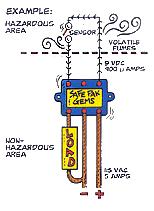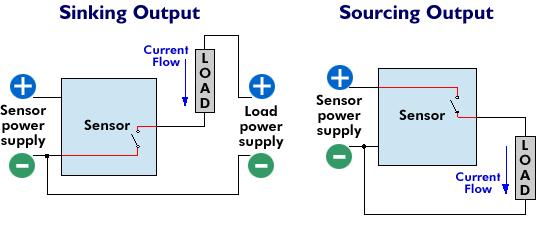Gems™ Sensors & Controls
P.O. Box 96860 Collection Center Drive
Chicago, IL 60693

What is your REMIT TO address?
Gems™ Sensors & Controls
P.O. Box 96860 Collection Center Drive
Chicago, IL 60693
What does it mean to be "Intrinsically Safe?"
The term "intrinsically safe" refers to equipment and wiring which is incapable of releasing sufficient electrical or thermal energy under normal or abnormal conditions to cause ignition of a specific hazardous atmospheric mixture in its most easily ignited concentration. This is achieved by limiting the amount of power available to the electrical equipment in the hazardous area to a level below that which will ignite the gases present. To be certified "intrinsically safe," a device or circuit must be so designed that no two simultaneous failures can cause an explosion. In order to have a fire or explosion, fuel, oxygen and a source of ignition must be present. An intrinsically safe system assumes that fuel and oxygen are present in the atmosphere, but the system is designed such that the electrical energy or thermal energy of a particular instrument loop can never be great enough to cause ignition. Traditionally, protection from an explosion in hazardous environments has been accomplished either through the use of explosion proof conduits and enclosures (intended to contain an explosion), or via pressurization or purging (intended to isolate the explosive gas from the electrical equipment). Intrinsically safe apparatus cannot replace these methods in all applications, but in many cases can provide significant cost savings in installation and maintenance of the equipment in a hazardous area. The basic design of an intrinsic safety barrier uses Zener diodes to limit voltage, resistors to limit current and a fuse. Gems™ Intrinsically Safe Relays and Zener Barriers are approved devices designed to render any non-voltage producing sensor or switch intrinsically safe. For more information on hazardous locations as defined by the National Electrical Code (NEC) Handbook, click here.

What is the difference between Wet Sink and Dry Sink?
Wet sink - The load is energized ("ON") as long as the sensor tip is immersed in fluid.
Dry sink - The load is energized as long as the sensor tip is dry (i.e. not immersed in fluid).
可以从Gems直接购买产品吗?
可以,请拨打400-110-7375售前热线进行咨询。
可以查看在线订单的预定装运日期吗?
可以。我们的Gems"™订单信息系统含有预定装运日期以及其他重要订单数据等信息,并且会每天更新。您可以点击我们网站页面顶部的“订单状态”,链接到相应的密码保护区域进行查询。如果没有ID和密码,请按照FasTrak上的指示获取.
可以在网上跟踪已装运订单吗?
可以。请点击这里链接到我们的订单系统,随时查看您的订单状.
Gems Sensors & Controls是否已通过ISO认证?
是的。Gems™通过了ISO 9001和ISO 13485认证.
何谓“CMOS/TTL逻辑”?
TTL是Transistor-Transitor Logic(晶体管—晶体管逻辑)的缩写,可看作是一种逻辑种类。逻辑种类是具有相似输入、输出和内部电路特性、但是执行不同逻辑功能的不同IC芯片的集合。CMOS是Complementary Metal-Oxide Semiconductor(互补金属氧化物半导体)的缩写,属于另一种晶体管逻辑种类。CMOS速度更快、功耗更低(例如,CLS-1200的5 VDC、0.5mA输出只够驱动1个TTL逻辑门,但可驱动10个CMOS门),因此近些年来比TTL更受欢迎。当今,大多数大规模集成电路(例如微处理器)都采用CMOS.
“灌入”和“拉出”的区别是什么?
灌入和拉出是描述相关负载(由传感器控制接通或断开的设备)供电方式(相较于传感器)的术语。灌入在两者中应用相对较为广泛,它指负载电流方向的改变,即由传感器流向外部电源。在灌入配置中,电流首先流过负载,然后流过传感器的输出开关,最后到地。灌入输出型传感器切换电路到地电位或负相。相反,拉出型是指传感器作为负载电流源的构造。在拉出型应用中,由传感器提供的电流先流过负载,然后到地。拉出型传感器切换电路到正相.
